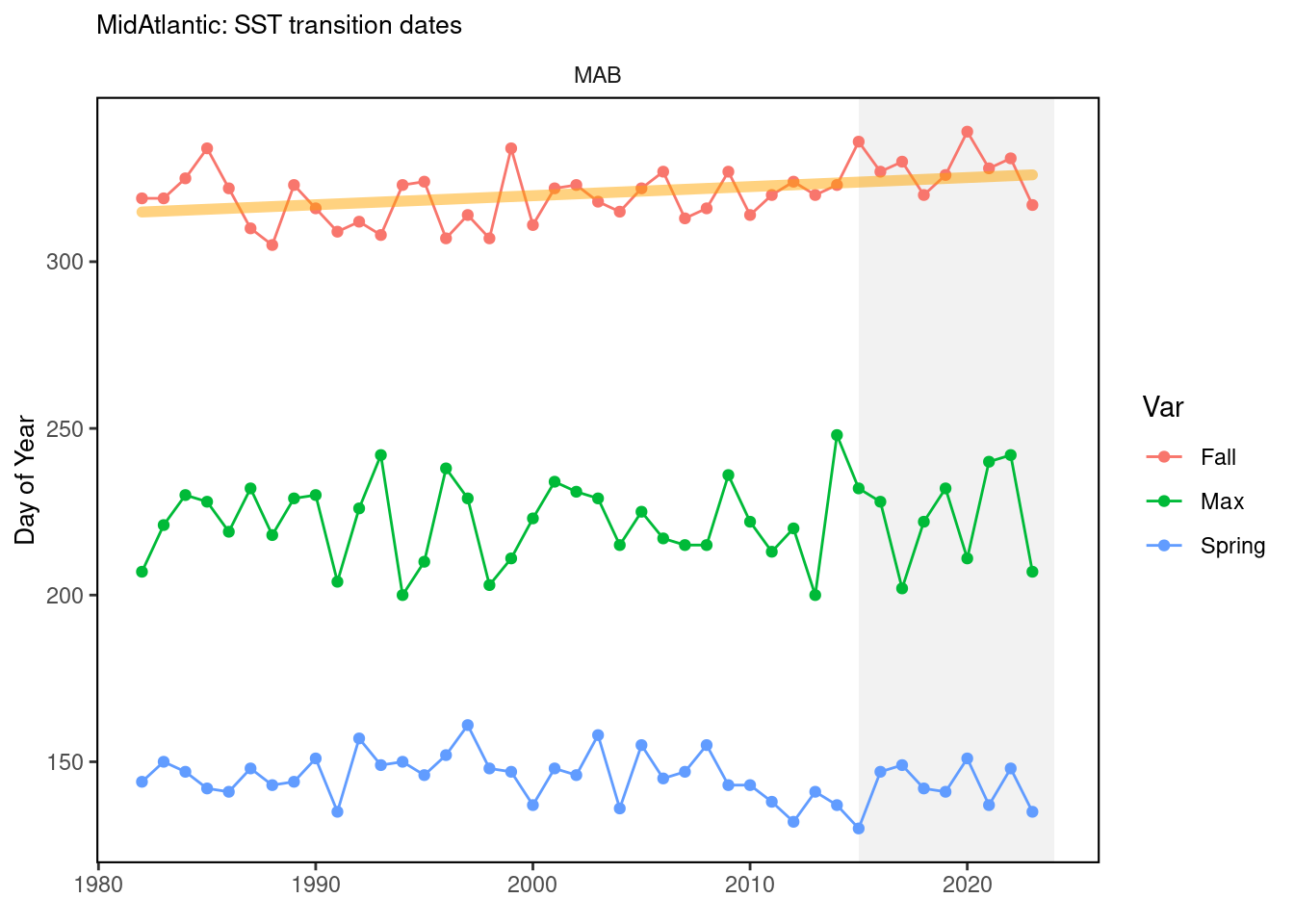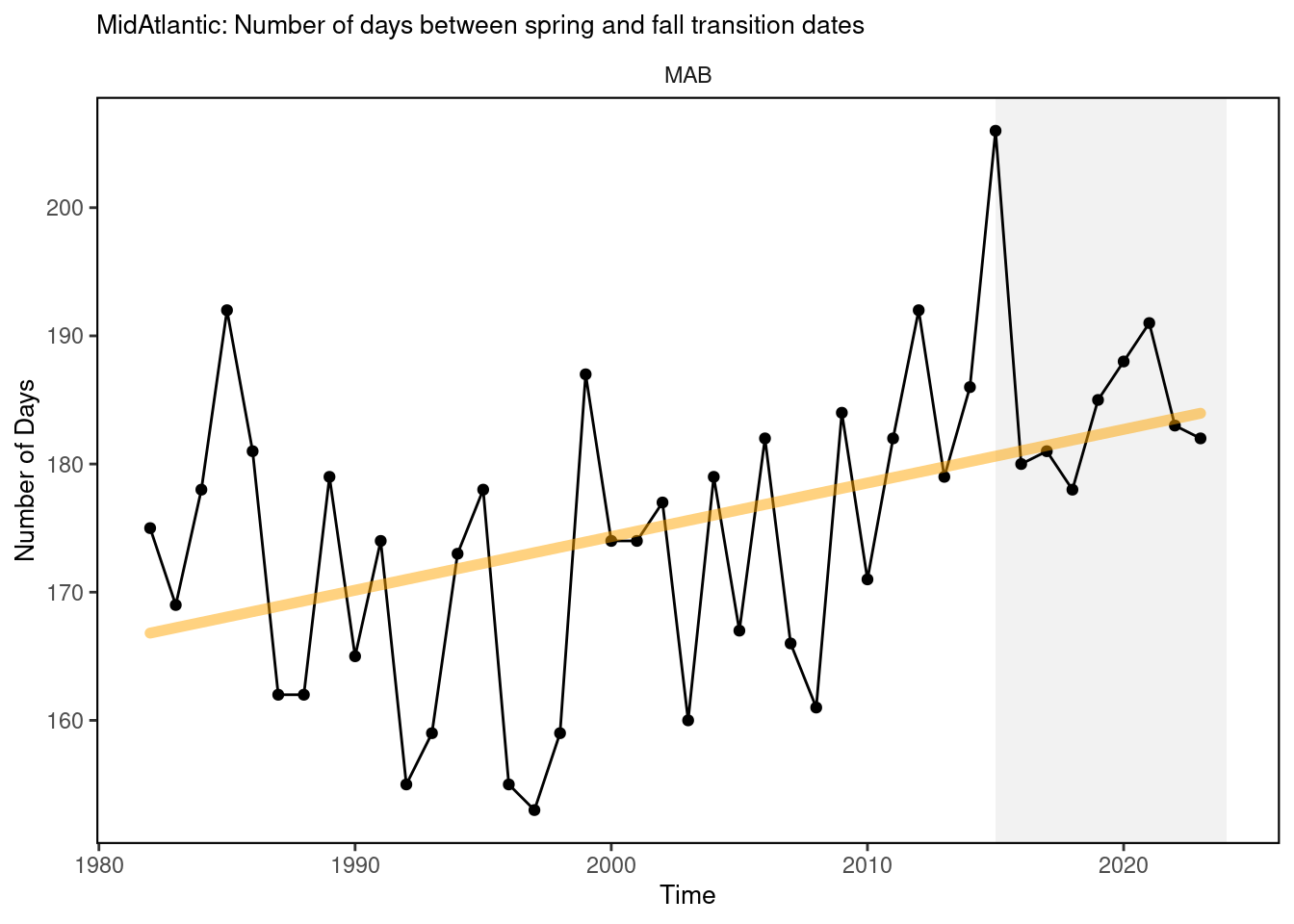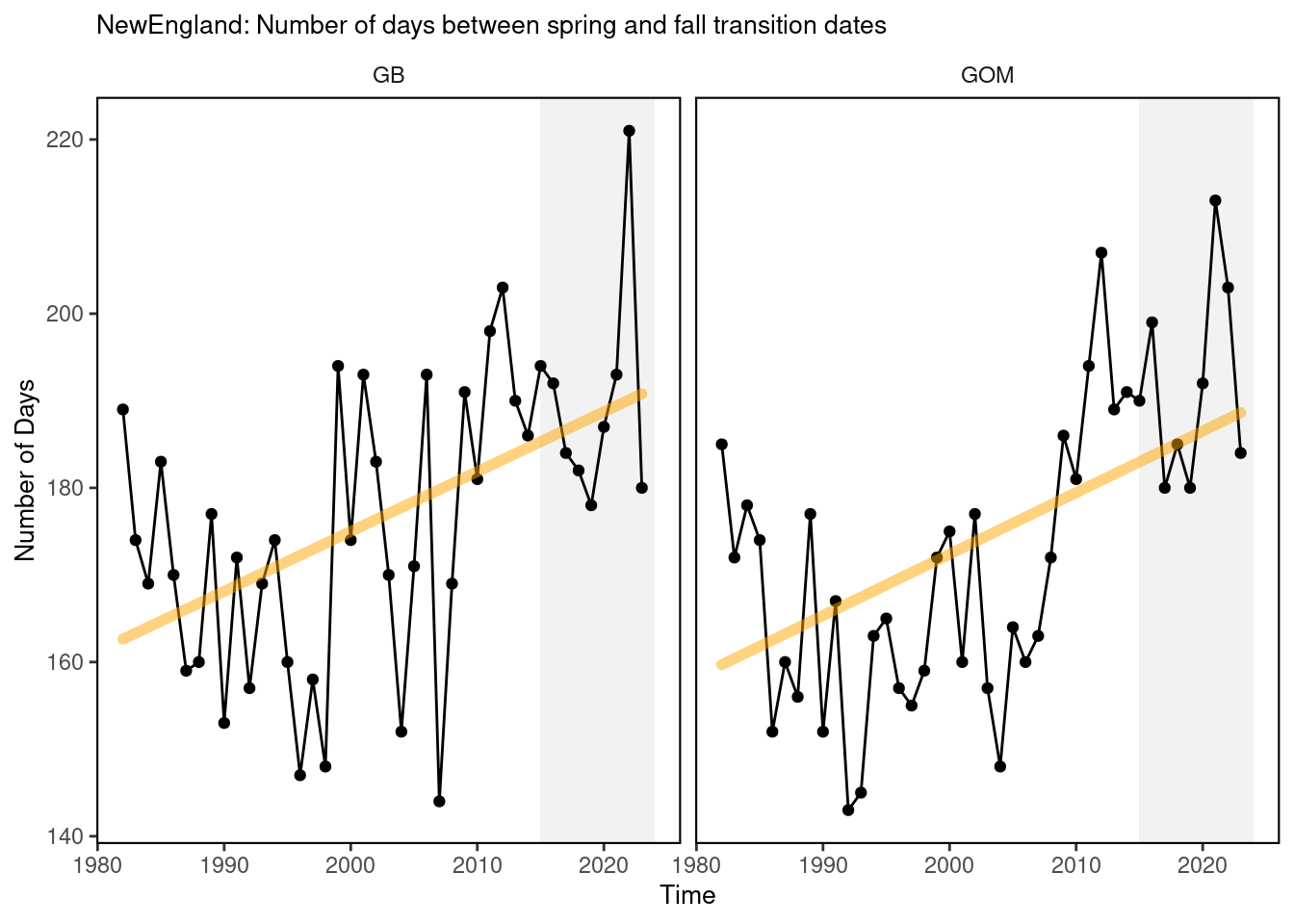45 Transition Dates
Description: The date that cool winter conditions transition to warm stratified summer conditions.
Indicator family:
Contributor(s): Kevin Friedland
Affiliations: NEFSC
45.1 Introduction to Indicator
Transition dates are defined as the day of the year when surface temperatures changeover from cool to warm conditions in the spring and back to cool conditions in the fall.
45.2 Key Results and Visualizations
Ocean summer length in Mid-Atlantic: the annual total number of days between the spring thermal transition date and the fall thermal transition date. The transition dates are defined as the day of the year when surface temperatures changeover from cool to warm conditions in the spring and back to cool conditions in the fall.
45.3 Indicator statistics
Spatial scale: by EPU
Temporal scale: Annual time series (1982 to 2023)
Synthesis Theme:
45.4 Implications
Prolonged fall temperatures have been linked to the increased number of cold-stunned Kemp’s ridley sea turtles found in Cape Cod Bay [70]
45.5 Get the data
Point of contact: kevin.friedland@noaa.gov
ecodata name: ecodata::trans_dates
Variable definitions
- falltrans 2. sprtrans 3. maxday
Indicator Category:
45.7 Accessibility and Constraints
No response
tech-doc link https://noaa-edab.github.io/tech-doc/trans_dates.html



